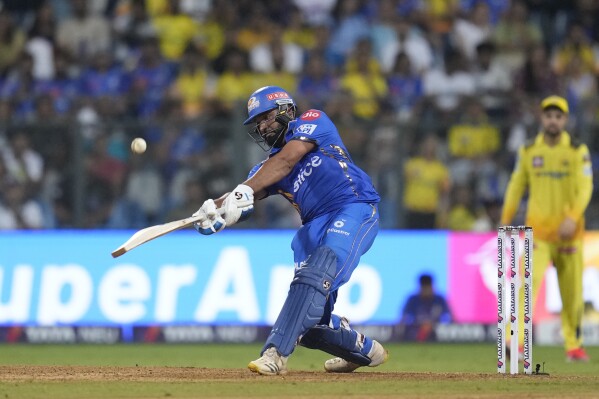Using Historical Game Data When Predicting Football and Cricket Match Results
Football and cricket have quietly become two of the most data-driven sports on the planet. What started as a way to keep basic scorecards and match logs has evolved into complex systems that track every touch, delivery, and movement. The goal now isn’t just to record the past but to use it to understand what might happen next.
Predictive analytics in sport is built on that idea. By using decades of recorded games, analysts and engineers build models that estimate performance probabilities. They don’t claim to know who will win tomorrow, but they can show what conditions make certain results more likely.
What Historical Data Really Means
Modern tracking goes far beyond simple stats. In football, sensors and optical cameras capture player positioning, acceleration, and passing networks. In cricket, every ball is logged with its line, length, speed, and result.
Opta, one of the largest data suppliers, tracks about 2,000 events per football match. CricViz, a leading cricket analytics firm, has archived hundreds of variables per Test and T20 game. Together, these datasets help analysts uncover recurring patterns, like how often a team scores when attacking from the left flank or how a batter performs against wrist spin on dry pitches.
How Models Are Used in Football and Cricket
Expected-goals (xG) models are used in football to estimate what “should” have happened based on past performance. The factors considered for this are shot quality and conversion rates. It’s been reported that these criteria are used by teams like Brentford and Liverpool to evaluate performance in addition to raw scores.
Then, when it comes to cricket, data models track every delivery’s impact on a match. Analysts use it to decide when to promote batters or which bowler type performs best on certain pitches. Former South Africa analyst Prasanna Agoram has often explained how ball-by-ball databases reveal match-up tendencies that coaches once had to rely on instinct to spot.
Fans now have access to these tools too, like TheTopBookies, an IPL score predictions site with a huge following in India. They help players with predictions through the use of match result archives with player-form metrics, weather records, and venue data to create easy-to-read probability dashboards.
They show how likely a side is to win under specific conditions and how certain players perform in similar scenarios. Now, the output isn’t a guarantee, but a trend map can make it easier for both fans and analysts to interpret games with more context.
Where These Models Work and Where They Don’t
Prediction models work best when the sport’s structure repeats consistently. Football and cricket both have fixed formats and thousands of archived matches, so algorithms have enough examples to learn from.
During IPL 2023, the Gujarat Titans placed heavy emphasis on powerplay analytics. Head coach Ashish Nehra spoke about using data to identify boundary zones and pace match-ups for the opening overs.
They then found that scoring boundaries in the first six overs had the strongest link to victory. That single insight shaped their attacking approach, and it paid off when they recorded one of the best power-play strike rates in the league, topped the table, and reached their second straight final.
Still, there are limits. Weather changes, player injuries, and pressure moments can overturn even the best projections. CricViz analyst Ben Jones once said, “Models can tell us how often something happens, but never exactly when.” That unpredictability is what keeps sport interesting, no matter how advanced the numbers become.
How Teams Use Prediction Beyond Match Results
Clubs and federations now rely on predictive systems for far more than match forecasts. The England and Wales Cricket Board uses historical workload data to manage player fatigue. Football teams use similar analytics to evaluate potential transfers—Liverpool’s data team used multi-year trend models to identify players like Mohamed Salah long before his breakout at Roma.
Broadcasters use predictive charts to enrich coverage, showing win-probability shifts in real time. Even grassroots coaching apps now include basic prediction tools built from open data. The science that once lived only in back rooms is now part of how fans watch and discuss the game.
There are concerns, too. Analysts warn about bias in data collection and privacy issues when wearable devices are involved. Governing bodies have started creating policies on how performance data can be stored and shared to keep competition fair.
Why Data Helps, Even When It’s Wrong
These systems’ strength is in the quality of their decisions rather than the accuracy of their predictions. Knowing that certain variables consistently influence results lets coaches prepare better and players understand risk. A captain might use win-probability data to time declarations or substitutions more precisely.
Even when a model fails to predict a result, it can still reveal why it failed. That’s something traditional coaching intuition could rarely test. The numbers turn sport into a feedback loop that refines itself season after season.
Closing Thoughts
Without a doubt, historical data has changed how both football and cricket are understood. They can also help newer fans to better understand the history of their favorite teams, and consider all that to have a better grasp of how they’ll perform in upcoming matches.
However, it must be emphasized that prediction models are just tools. They can never really give absolute results. Instead, they help teams plan, help analysts explain, and help fans see more than just the scoreboard.
Read More: Supporting A Loved One At Home When They Have A Dementia Diagnosis

